Published
- 04:00 am
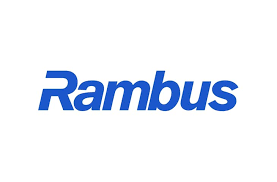
Ushering in a new level of security for blockchain implementations, Rambus Inc. (NASDAQ: RMBS), today announced the availability of Vaultify Trade. The platform enables the secure storage and transfer of crypto and digital assets using proven, bank-grade, field-deployed tokenization and encryption technology. Vaultify Trade is the first product that enables banks, exchanges and investment portals to leverage tokens to secure the purchase, storage, exchange and sale of cryptocurrencies.
451 Research Director, Jordan McKee explains: “While cryptocurrencies represent significant opportunities, a major risk factor is that they are prone to theft, in large part due to the lack of strong security solutions for the blockchain. This undermines consumer confidence and limits the ability for financial services companies to offer products that help comply with regulations and best practices. With additional trust and transparency, the potential for cryptocurrencies to transform financial services can be realized.”
Blockchain is gaining increased traction across industries with the decentralized public-ledger framework opening new use cases daily, extending beyond cryptocurrency into financial services, retail, real estate, healthcare and insurance. While it provides a trusted and immutable record, the blockchain is not completely secure. Blockchain stores assets of value at an address in a public ledger using a private key. Much like a card or account number to access funds, that key is all that is required to access that digital asset, and if it is lost or stolen, that value is gone. Multi-signature enhances the level of security by introducing additional distributed keys for recovery and authentication of transactions, but still relies upon the use of original keys that are vulnerable to attack. Given the high-value financial and safety-critical nature of some proposed use cases, it is imperative that nothing alters data prior to its placement on the blockchain.
Tokenizing crypto assets and the blockchain
To meet this critical market gap, Rambus has created Vaultify Trade. Vaultify Trade combines multi-signature with proven, bank-grade tokenization technology to enhance security, confidentiality and privacy by replacing sensitive credentials—such as private keys for blockchain and crypto assets—with a non-sensitive equivalent token that is unique to each transaction. Unlike the private keys used to authorize blockchain transactions, tokens cannot be used by a third party to conduct transactions if intercepted. By replacing sensitive private keys with a limited use token that can include domain controls for device or channel, tokenization mitigates fraud risk and protects the underlying value of credentials. This reduces cryptocurrency security risks, which have led to enormous losses, adverse brand impact and suspensions of trading.
“Crypto assets are on the verge of going mainstream, but many of today’s consumers find cryptocurrency to be inaccessible and confusing, and are concerned by high-profile hacks. In order to accelerate adoption, consumers are seeking a secure, familiar way to access, trade, and own crypto assets through their trusted banking or trading apps,” said Jerome Nadel, GM of Payments and CMO, Rambus. “With over 100 billion transactions secured by Rambus technology, Vaultify Trade is a logical extension of our tokenization expertise. Banks, exchanges and investment houses can now quickly incorporate blockchain technologies into their product portfolios, armed with the confidence that data, value and assets are secure.”
Designed for virtual assets on the blockchain, Vaultify Trade features include:
- Tokenized Security – Replace sensitive private keys with domain-specific tokens to secure the transaction and storage of digital assets, limit vulnerabilities and improve trust.
- Multi-Signature – Multi-signature wallets require at least two signatures to confirm a transaction, increasing security and preventing fraud, while enabling faster transactions.
- Segregated Wallets – Combine the security benefits of an offline cold wallet with the convenience of an online wallet through multi-factor authenticated access to an online segregated wallet.
- White-label app and SDK – The Vaultify platform can support a white-label app or an SDK, allowing consumers to easily access and trade cryptocurrency through their usual mobile and desktop banking portals.
Related News
- 08:00 am
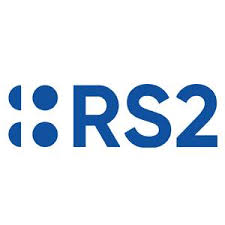
Research published today by RS2 examines the payment landscape across a number of global markets, and finds that proliferating payment channels and the expectations of consumers and merchants has made payment service processing increasingly complex. Payment fragmentation is now the “new normal”, giving consumers a great deal of choice, and merchants an ever-bigger challenge to deliver seamless services across channels.
The report—Overcoming Fragmentation: The Payments Platform Challenge—looks in-depth at both developing and developed markets, and those with a history of adopting new technology and those who are traditionally laggards. It finds that:
· Mobile payment technologies have gained momentum in mature markets, and look set to take hold in other markets sooner rather than later
· Previously separate payment channels are blurring together
· The changes in these markets are driven both by card schemes and fintechs using digital payments
· Many countries with a digital economy strategy are creating a legal framework for cash-less B2C and B2B payments
· There is no single trend—every market is different. This, and the multiple payment methods in use, mean that merchants and the payments industry that supports them, need to position themselves carefully, and be ready to shift when necessary
“What is clear is that this fragmentation of payment methods makes things tricky for both merchants and the payment industry,” said Radi Abd El Haj, CEO and Executive Director, RS2. “It is critical that merchants in these markets have a clear digital strategy in order to meet the needs of their customer. If these merchants are supported by their acquirer and clear strategy supported by flexible payment systems, they can react quickly. If not, they cannot.”
The report concludes that the best way to overcoming fragmentation lies with Open Payment Platforms, integrating POS, mPOS, online and mobile payments together. By connecting the multiple payment services demanded by consumers, it’s possible to enable omni-channel payment acceptance services for cards, IBAN-based bank payments, online wallets, prepaid products, in-app payments, mobile HCE NFC payments in-store and immediate payments—all in real-time.
Related News

Breana Patel
CEO/Thought Leader at Bonova Advisory/Risk&Regulatory Advisory
With great organizational change comes great responsibility. see more
- 04:00 am
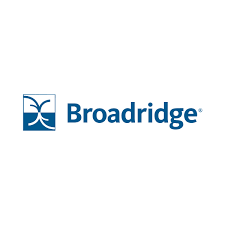
Broadridge Financial Solutions, Inc. (NYSE:BR), an S&P 500 company and global Fintech leader with $4 billion in revenue, today announced the appointment of Julie Flack as General Manager of its Australia business, responsible for driving growth of Broadridge’s sell-side and buy-side businesses in Australia and New Zealand. Flack will directly manage all Broadridge associates in Australia and she will report to David Becker, Head of Asia Pacific. Her remit will also include product management across Asia Pacific, including defining product strategy and planning and in this role will report to Nidhi Singh, Vice President, Global Product Management.
Flack comes to Broadridge with more than 20 years of financial services industry experience encompassing roles across futures & options, derivative operations and e-commerce. She joins Broadridge from Deutsche Bank, where she helped build the bank’s post-trade business, most recently as Director, Head of Listed Derivatives, Australia and Head of Clearing Product Development & Client Solutions, Asia Pacific. In her earlier days with Deutsche, she led the Priority Client Management division for Asia Pacific and prior to this served as Head of Global Client Operations for the Australia business.
“We are excited to welcome Julie to the Broadridge team and look forward to working with her to enhance Broadridge’s strong presence across Asia Pacific markets,” said Becker. “She is a highly regarded financial markets professional with a wealth of knowledge across electronic trading platforms and post-trade delivery mechanisms and channels with strong ties throughout the region.”
“I am thrilled to join Broadridge in Australia and work with the team across Asia Pacific,” said Flack. “I have worked closely with regional teams in Singapore, Tokyo and Sydney in the past and look forward to building upon Broadridge’s international expansion going forward.”
The appointment comes at a time when Broadridge has seen strong growth in Asia Pacific, especially from global banks and brokers and increasingly from regional players, as well as asset management firms. Flack’s appointment is part of significant investments Broadridge is making in the Asia Pacific region, which the company sees as a key driver of growth.”
Related News
- 05:00 am
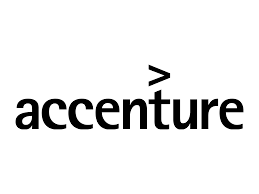
Accenture (NYSE: ACN) has developed and tested two technology solutions that enable two or more blockchain enabled ecosystems to integrate, solving a critical challenge for broad adoption of blockchain technology.
The two Accenture solutions show that that blockchain platforms from Digital Asset (DA Platform) and R3 (R3 Corda) as well as Hyperledger Fabric and Quorum are capable of integrating to securely orchestrate business processes. The technology solutions also demonstrated they could actively share data and information across distributed ledgers, proving that integration is possible across the growing number of blockchain and distributed ledger platforms in the market.
“This is a game-changer that can help accelerate adoption of blockchain technology. The key challenge was to develop the ability to integrate without introducing ‘operational messaging’ between distributed ledger technology platforms in order to stay true to the principles and benefits of blockchain technology,” said David Treat, managing director and Global Blockchain Lead, Accenture. “Applying this capability with our clients is already unlocking new opportunities to bring ecosystems together, mitigating key concerns about picking the ‘wrong’ platform or having to re-build if one partner uses something different.”
Interoperability has emerged as a hot topic among industry analysts and enterprise technology professionals, who acknowledge the high probability of multiple DLT platforms gaining traction in the market. Additionally, different industry verticals and business ecosystems may prefer one platform or another, such that over time, market players will see value in connecting with each other. Concern about picking the ‘wrong system’ or looking ahead to perceived challenges to connecting blockchain-based ecosystems that may be on different platforms has been a hindrance in moving the technology forward.
Blockchain is a new type of distributed database system that maintains and records data in a way that allows multiple stakeholders to confidently and securely share access to the same information. The technology is poised to revolutionize operations across a multitude of sectors, such as financial services, government, healthcare, entertainment and freight and logistics.
Proven interoperability between major #blockchain platforms that stays true to the benefits of the technology
Industry analyst Gartner has estimated that the number of blockchain platforms could continue to grow to more than 70 before competition and consolidation narrow the field to a much smaller number of dominant providers.
For different distributed ledger technologies (DLTs) to integrate, they must preserve the ability to audit, trace and verify data elements with complete security and integrity. Accenture’s technology solutions solve this challenge with an interoperability node that resides, and provides the lines of communication, between two or more DLT platforms. The interoperability node includes embedded business logic that contains the business standards, policies and guidelines by which the different blockchain platforms have agreed to work together.
The solution enables integration between the different blockchain platforms by either allowing for the transfer of a tokenized asset on two blockchain platforms or allowing mapping of data to the different blocks that exist in two different blockchain platforms at the same time, with the reference data kept in constant sync. With the solution, there is no need for ongoing messaging between the different platforms. Rather, it becomes possible to transfer and maintain an “active state” between the nodes of the separate blockchain platforms, keeping them synchronized.
“Business is conducted across multiple ecosystems and, in many instances, we’re seeing these ecosystems align to “fit-for-purpose” platforms. But for blockchain to achieve its full potential these different platforms must interact seamlessly with each other, and our technology solutions show that this is possible — while still delivering the security and transparency benefits that blockchain offers,” said Emmanuel Viale, managing director, Accenture Labs. “This is a crucial step to ensure that growth and innovation continue with this dynamic technology.”
“It’s important for our customers to know that not only does the Digital Asset Platform seamlessly integrate with their existing systems, but also has the possibility to integrate with other DLT platforms,” said Shaul Kfir, chief technology officer, head of Technology Architecture & Innovation at Digital Asset. “Accenture has demonstrated a useful approach which addresses many practical enterprise business needs.”
Richard Gendal Brown, chief technology officer at R3 said, “We have said right from the beginning that interoperability is key to avoiding the trapped assets and silos of the past. We made specific design choices when building Corda to ensure that applications built on our platform can interoperate without friction. The successful testing of these technology solutions is a significant step forward for blockchain development and validates our approach.”
"Accenture and IBM have long recognized the need for scale, while enabling technologies to work collaboratively without altering respective platforms,” said Jerry Cuomo, IBM Fellow and vice president for Blockchain Technologies. “As we continue to work with our consortia across platforms we look forward to applying this technology jointly to a broad range of enterprise ecosystems."
Accenture will continue to test its technology solutions with ecosystem partners to establish integration effectiveness between other leading DLT platforms. The company has filed two patent applications for key elements of the underlying technology used in the integration technology solution and expects to file additional patent applications in the near future.
Related News
- 05:00 am

Accuity, the global provider of financial crime compliance, payments and Know Your Customer (KYC) solutions, has announced a multi-year transformation programme to enhance its Bankers Almanac Risk & Compliance portfolio that will help banks conduct faster and more accurate risk assessments for financial counterparties.
As part of the first stage of the transformation programme, Bankers Almanac Due Diligence Repository now supports the latest version of the Wolfsberg Group Correspondent Banking Due Diligence Questionnaire (CBDDQ), which was revised to set a new enhanced industry standard in financial counterparty KYC. Banks can now submit information via an online form, which intuitively structures and validates the flow of information directly into Bankers Almanac, enriching the profiles of financial institutions and laying the foundations for automated risk assessment. This feature reflects industry demand to digitalise KYC operations, with a recent Accuity KYC survey revealing that 79% of respondents see automating data and workflow processes to save time as a priority. In the same survey, 76% of respondents said that onerous processes remain a challenge for KYC, indicating that improving efficiency has never been more important.
Through continuous innovation, Bankers Almanac for Counterparty KYC, an online tool providing intelligence on over 22,000 global financial institutions, will become more interactive, offering automated contextual insights into the risk of doing business with correspondent banks. By modernising and streamlining the user interface and proactively alerting users to risk-based changes, Accuity is making the solution more customisable and is incorporating the latest user experience (UX) design principles to give clients easy access to the risk insights they need.
Additionally, Accuity will offer an API option to enable financial institutions with large-scale KYC operations to integrate Bankers Almanac counterparty risk insights with their internal systems, providing a greater level of automation. This will support banks in their efforts to reduce the manual process of gathering KYC data, thereby leaving more time for analysts to focus on risk-based decision-making.
Dalbir Sahota, Director, Product Management, Accuity, commented: “As we help customers manoeuvre the complex regulatory landscape, we are actively transforming our technology to ensure our solutions meet the demands of the digital economy. Bankers Almanac continues to be trusted by clients worldwide because the accuracy of our data is unmatched in the industry. We are now harnessing that data in innovative ways to bring business-critical risk insights to users’ fingertips and reduce the manual processing burden, providing greater transparency and helping them mitigate risk in real time.”
These enhancements are the latest in a series of significant developments to Bankers Almanac. In 2016 Bankers Almanac Ultimate Beneficial Ownership data and visualisation tools were added to the portfolio, to help banks meet growing regulatory requirements. In 2017, Accuity launched Bankers Almanac Regulatory Views, using big data analytics to link the entities in Bankers Almanac to sanctions and state-owned enterprise data sets, giving deeper insight into the networks of financial institutions.
Related News
- 04:00 am
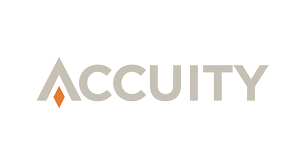
According to the Accuity “2018 Payments Industry Report” released today, payments providers are more focused on streamlining and automating the validation of bank and payment information in order to reduce payment failures and create a more trusted and transparent experience.
Findings from the survey of over 100 financial institutions and payment providers revealed that against a backdrop of growing and increasingly complex cross-border payment volumes, the majority say they provide customers with the validation of key payments data elements prior to remittance, and many have invested significantly to automate this process. Moreover, over one third of respondents claimed that their customers expected their payments provider to complete such validations on their behalf, and bear the costs of payments failure.
Sarkis Akmakjian, Senior Director at Accuity, said: “In the digital, real-time economy, customers now insist that payment providers send payments at a lower cost, into more markets, and with greater certainty. The findings demonstrate that the industry is responding to this challenge by embracing technology that facilitates pre-validation services and seamless payment processing.”
The report also disclosed that over half (52 percent) of payment providers experience payment failure rates of less than one percent, and almost all respondents (90 percent) cite a payments failure rate under five percent. This is attributable to the way in which payment processors have embraced new technologies to differentiate themselves from other players in this increasingly competitive market. The trend indicates firms have pivoted to focus more on customer satisfaction and are now delivering the fast, accurate and reliable payments demanded by their clients.
However, despite the low payment failure rates, payment providers reported a rise in the overall cost of failed payments, with more than a third of firms reporting an average fee of more than $30 USD, while over 20 percent reported an average $40-50 USD failure charge. It is likely that these figures are a result of banks’ increased diligence in assessing and passing on fees, driven by tighter margins. The broader geographical disbursement of payment systems could also be contributing to payment failures in jurisdictions where payment systems are not as familiar.
Driven by competitive pressures of the current market, 93 percent of firms cited maintaining their reputation and relationships with customers as a top priority in 2018. Similarly, 87 percent of respondents stated that minimising the risk and exposure of failed payments was a key priority, as this would enable them to build greater trust with customers.
Sarkis Akmakjian said, “The adoption of new technology has the ability to reduce friction, and ultimately cost, in the payment process, but more importantly it is enabling payment providers to become more customer centric. The significant shift towards automation is key to meeting the dual-fold challenge of keeping up with the pace of regulation, while simultaneously winning customer satisfaction.”
Related News
- 06:00 am

Artificial intelligence (AI) is everywhere and nowhere at the same time. This technology has quickly jumped from esoteric laboratory to full acceptance, but its long-term potential contributions to business are not obvious yet. AI may be the greatest story of our time, but the business benefits and the actions to take remain somewhat cloudy, whereas employees are still nervous about AI and how it may affect their jobs.
Without transparency, trust and personalisation – three essential pillars – AI could fail. AI’s benefits, therefore, will only be realised by organisations that look deeply into the souls of stakeholders across the value chain. Business will need to embrace a human-centric, ethically-informed approach that minimizes unintended bias and seeks to augment the creative, emotional and constructive capabilities of human beings coupled with the speed, accuracy and scale of machine intelligence. It is human and machine at their best.
Personalisation has become a differentiator for many industries. It does, however, require collecting, analysing and understanding massive amounts of data, overwhelming any company. For AI, the more data, the better, as the technology can be trained for thoughtful interpretations that guide everything from decisions, to detection of security breaches. Only by putting AI to work in a way that reaps business benefits on a hyper-personalised level while reinforcing transparency and trust with key stakeholders will lead to quantifiable, formative contributions to business.
Here are some concrete steps to take to implement effective AI in any business:
- Firstly, view AI through a human-centric lens. All business decisions are, ultimately bets on human behaviour. Start with an understanding of what people want and the methods they may use to achieve the desired outcome. AI should augment rather than replace human insights and experiences.
- Secondly, focus on bringing business value at scale and speed. It is easy to conduct a few small AI test cases and declare success. However, quickly scaling and deploying the technology requires a strategic view that advances machine intelligence throughout the organization. It also requires sensitivity to the changes that AI introduces to everyone – consumers, employees and management. AI at scale and speed means code is built from insight into what is really needed at a human level.
- Finally, make sure AI is deployed with strict governance and ethical oversight regarding its intent and actions, while ensuring AI’s continuing operations are transparent and deserving of stakeholders’ continued trust.
AI will only succeed if businesses take a human-centric approach. Sociologists may be key in organisations’ initial conversations on AI-related business needs by providing insights into behaviours between the organisation and its stakeholders. To anticipate the expectations of those who will benefit from AI, every system must be understood and designed in terms of human needs, whether it is a consumer-facing app, an employee-facing administrative website, or compliance and regulation monitoring.
“Even pure machine-to-machine interactions require an understanding of the human benefits in order to prioritise features such as cost, reliability and speed, says Sanjiv Gossain, European Head of Cognizant Digital Business. “The smartest strategy is to look beyond traditional technology processes instead viewing AI as a new way of thinking and acting that can fundamentally reshape the business ability to personalise customer offerings, services and experiences.”
Related News
- 04:00 am
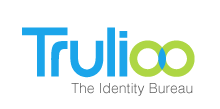
Trulioo, the leading global identity verification provider, today announced that it is now able to verify five billion people through its flagship electronic identity verification platform – GlobalGateway.
Developed for an international market, Trulioo’s GlobalGateway helps businesses meet a diverse range of compliance requirements while mitigating risk and preventing fraud in an effort to increase trust and safety in today’s digital-first world.
“Knowing your customer is crucial,” said Trulioo’s CEO and founder, Stephen Ufford. “That’s why we’re continuing to invest heavily in expanding access to trusted data sources. Our dedicated team has set out to verify the entire global population and in turn, empower the world’s citizens with access to basic financial services – regardless of location, creed, circumstance or financial situation.”
“The continued expansion of Trulioo’s marketplace for identity services will go a long way in helping the most vulnerable people transition out of poverty,” Ufford continued.
Globally, there are around two billion people referred to as “unbanked” or “underbanked”. In the UK specifically, 1.5 million adults remain unbanked, despite being ranked ninth in terms of banking inclusion by the World Bank.[1]
Internationally and in the UK, the unbanked have little to no affiliation to the traditional banking system – many do not have bank accounts, credit cards or loans. From this underserved group, 1.5 billion are unbanked solely due to their inability to prove their identity through a valid birth certificate, passport or proof of residence.
With GlobalGateway, Trulioo clients have real-time access to more than 400 reliable data sources – such as credit bureau, government, utility, consumer, and banking data from around the world, to instantly verify five billion people.
William Sirett, Executive Director at Interactive Brokers (U.K.) comments: “Trulioo has become an integral part of our mission to build electronic access trading technology that delivers real advantages to traders, investors and institutions worldwide. Trulioo’s GlobalGateway solution enables us to verify clients across borders more efficiently by effectively integrating a variety of data sources. Working with a single provider for customer verification allows us to expand our outreach like never before.”
Earlier this year, in an effort to verify customers in hard-to-reach markets and further its fight to bridge the financial inclusion gap, Trulioo released Mobile ID capabilities, a unique and powerful source for AML/KYC compliance and fraud detection. This new and reliable identity verification source is a game-changer, leveraging some of the world’s largest mobile network operators to advance our mission to break down identity verification barriers so that organizations can better serve the entire global population.
Related News
- 05:00 am
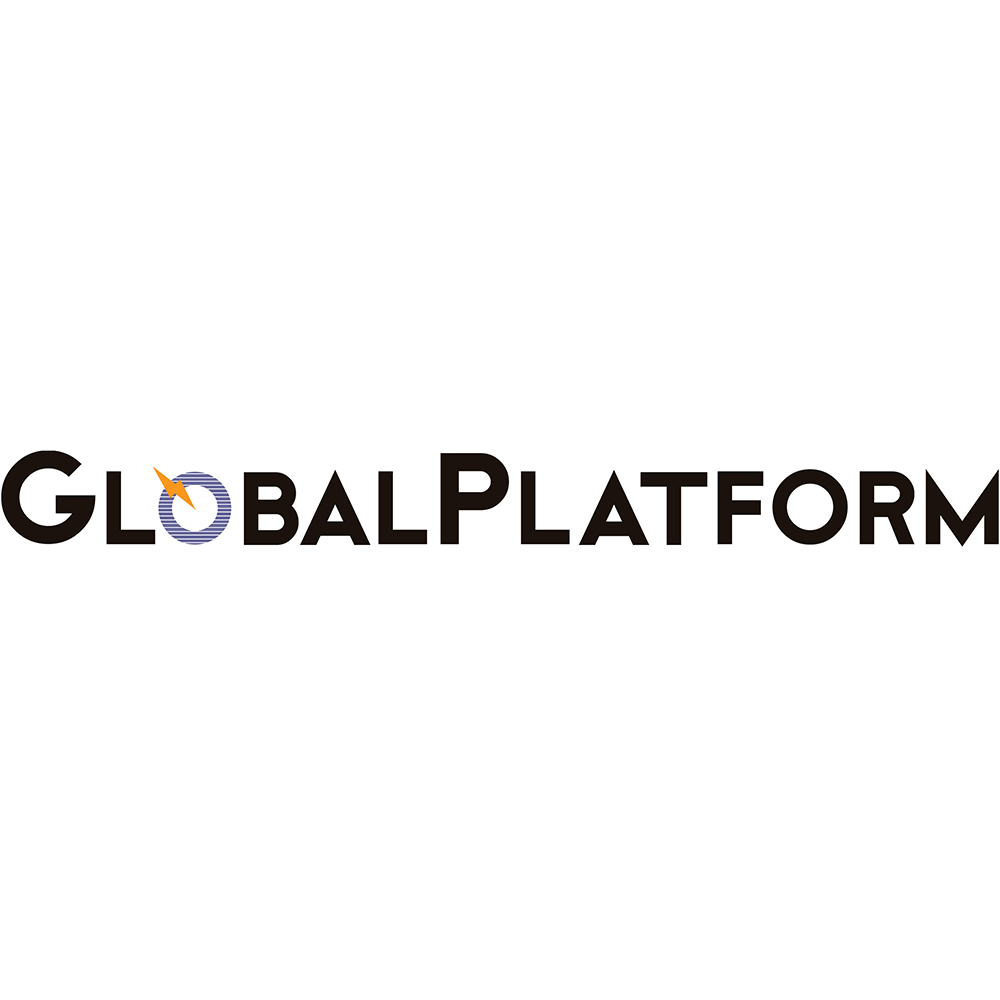
GlobalPlatform, the standard for secure digital services and devices, has conservatively calculated that more than 5.5 billion Secure Elements (SEs) deployed in 2017 were based on its specifications, an increase of over 1.5 billion from the previous year. Additionally, over the last three years, in excess of 1 billion SEs were embedded within mobile devices, 100% of which were based on GlobalPlatform technology.
“Trust is fundamental to the success of the IoT ecosystem and each device – edge, fog or cloud – must be protected appropriately,” comments GlobalPlatform’s Technical Director, Gil Bernabeu. “These figures highlight the importance of GlobalPlatform’s specifications and certification programs and the central role the organization is playing in enabling the protection of devices and digital service for all markets.”
GlobalPlatform protects digital services by standardizing and certifying a security hardware / firmware combination, known as a secure component, which acts as an on-device trust anchor. A core focus of GlobalPlatform’s work is the standardization and interoperability of application management within secure components, specifically SEs and Trusted Execution Environments (TEEs). SE and TEE technologies are now widely-deployed across a range of markets including payments, telecoms, transportation, automotive, IoT, government and enterprise ID.
To enable device manufacturers to proactively market their products as meeting the needs of digital service providers, GlobalPlatform manages afunctional certification program for SEs. This objectively illustrates that a device manufacturer’s GlobalPlatform-based secure component and digital service management capabilities are interoperable and meet required security levels, providing reassurance that the digital service can perform as intended in the field.
With analysts projecting that cyberattacks will cost the world up to $6 trillion annually by 2021, Executive Director Kevin Gillick adds: “We understand, and can respond to, the challenges facing today’s digital world because of the collaboration at the heart of GlobalPlatform. Our technology is developed by combining the knowledge of our extensive membership and numerous standards bodies and organizations across the world. Threats evolve, but by standardizing foundational security infrastructures, we can react quickly with cost effective, interoperable solutions that benefit service providers, application developers and manufacturers.”









